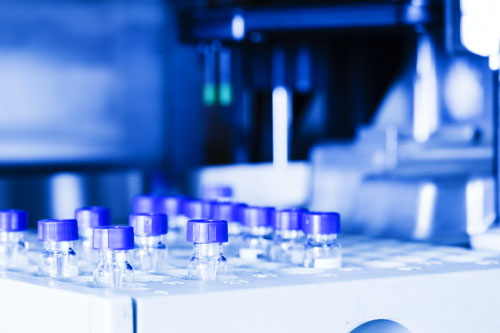 Add My Company
Add My Company

In the evolving landscape of Biobanking and cell banking, the integration of automation can be a transformative force, revolutionising the way laboratories store, manage and make use of cryogenically preserved cells and tissues. As the demand for precision, efficiency and scalability continues to rise, automation stands at the forefront, offering many benefits to modern biobanking laboratories.
Cryopreservation:
One of the critical areas of cell banking lies in cryopreservation and automation has become indispensable in this process. Controlled Rate Freezers ensure the freezing of cells occur under standardised and controlled conditions, a paramount factor for maintaining cell viability during storage. This not only enhances the longevity of stored cells but also minimises the variability associated with manual handling.
Inventory Management:
Automation takes centre stage in managing cell inventories. Automated systems track and organise cell lines, meticulously recording their characteristics, storage conditions and any transient temperature history. Managing not just the storage locations but also the temperature of each sample within a cryogenic storage facility is crucial. Maintaining precise temperature control is essential for preserving the integrity and viability of these samples. Even small variations in temperature can significantly impact the stability and quality of biological materials stored in such conditions. How does your facility currently monitor and regulate temperatures to ensure the optimal preservation of samples?
A good inventory management system not only reduces the likelihood of errors in documentation but also facilitates a seamless workflow, enabling researchers to access the required cells efficiently. New automated retrieval systems can now ensure that only the correct samples are retrieved, avoiding accidental or malicious removal of items.
Documentation and Tracking:
The importance of accurate documentation and traceability cannot be overstated in the realm of cell banking. Automation aids in the documentation of procedures and the recording of data, thereby reducing the risk of errors. This not only ensures compliance with regulatory requirements but also establishes a robust foundation for quality control.
Web or cloud-based systems! They allow seamless access to documentation from any location with an internet connection. This not only facilitates easier collaboration among different teams or users but also ensures that everyone is working with the most updated and consistent information.
Quality Control:
Ensuring the quality of stored cells is paramount and automation plays a crucial role in this aspect. Automated systems conduct rigorous quality checks and tests on stored cells, ensuring they meet predefined standards before being used in experiments or therapies. This not only enhances the reliability of research outcomes but also contributes to the safety and efficacy of therapeutic applications.
 Robotic Handling:
Robotic Handling:
The deployment of robotic systems in handling cell cultures has redefined precision and minimised contamination risks. These systems are adept at transferring cells between containers and executing repetitive tasks accurately. By reducing human intervention in these delicate processes, laboratories can mitigate the risk of contamination and human error, thereby bolstering the integrity of stored cell cultures along with complete traceability of transactional events..
Process Monitoring and Control:
Automation facilitates real-time monitoring of conditions impacting the samples. This provides valuable insights into the environment and enables automated adjustments to maintain optimal conditions. The result is a dynamic and responsive system that ensures the well-being of cells throughout the storage period.
Scale-up and Manufacturing:
In the realm of cell therapy and large-scale production, automation emerges as a key player in scaling up cell culture processes. Laboratories can meet the growing demand for cell-based therapies while ensuring consistency and quality. Automated systems streamline the production pipeline, reducing the time and resources required for scaling up operations.
Balancing Automation with Human Expertise:
While automation streamlines numerous aspects of cell banking, it is imperative to strike a balance with human oversight and expertise. Critical decision-making processes and handling unexpected situations necessitate the keen intuition and experience of human operators. Additionally, validation and regulatory compliance remain integral to the successful implementation of automated systems, ensuring the safety, efficacy and adherence to industry guidelines.
Conclusion:
In conclusion, the integration of automation in modern biobanking laboratories represents a paradigm shift in how we approach the storage and utilisation of cells. From cryopreservation to quality control and scale-up processes, automation enhances efficiency, accuracy and scalability. As laboratories continue to embrace these technological advancements, the synergy between automation and human expertise will undoubtedly propel the field of cell banking into new realms of innovation and discovery.
For more information on The Transformative Power of Automation in Modern Biobanking Laboratories talk to Biopharma Group

